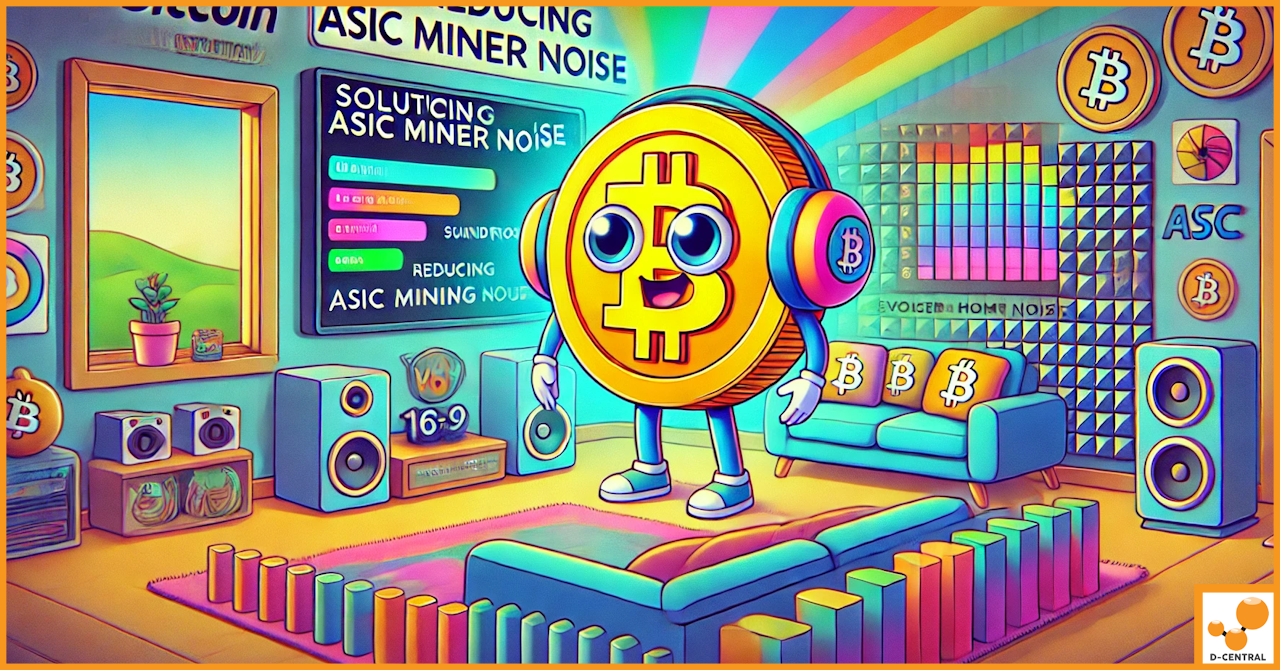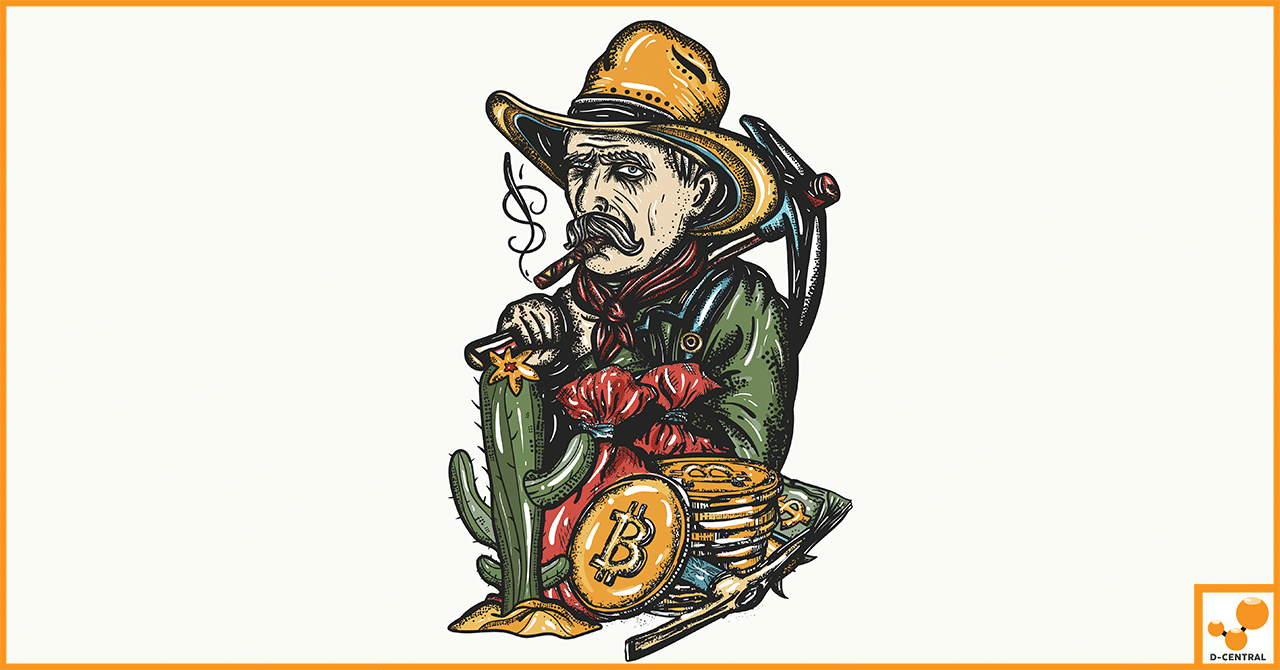
Mining Rig Noise Reduction: Solutions for a Quieter Home Mining Experience
In the world of cryptocurrency mining, ASIC miners are powerful tools that can significantly boost profits. Crypto mining, especially with
4479 Desserte Nord Autoroute 440, Laval, QC H7P 6E2

In the ever-evolving world of digital currencies, Bitcoin stands out as a pioneering and dominant force. Since its inception, Bitcoin has not only captured the imagination of tech enthusiasts but has also become a focal point of interest for investors, businesses, and everyday users globally. Its rise to prominence is marked by its innovative use of blockchain technology, offering a decentralized, secure, and transparent method of transaction. Amidst this growing popularity, individuals and organizations are continuously exploring ways to acquire Bitcoin, primarily focusing on two methods: mining and purchasing.
Mining, the process of generating new Bitcoins through solving complex computational problems, is not just about adding to one’s digital wallet; it’s about contributing to the very fabric of the Bitcoin network. On the other hand, purchasing Bitcoins offers a more direct route, involving buying the cryptocurrency at market prices from exchanges or other holders. Each method carries its unique set of intricacies, challenges, and benefits.
In this exploration, we delve into the nuanced world of Bitcoin acquisition. We aim to unravel the complexities and highlight the benefits of running a Bitcoin mining operation as opposed to the straightforward approach of purchasing Bitcoins. This comparison is not just about evaluating financial returns; it’s about understanding the broader impact on the blockchain network, the technological commitment, and the long-term implications for the global Bitcoin community.
Bitcoin, the first and most well-known cryptocurrency, emerged in 2009 from a whitepaper written by an individual or group under the pseudonym Satoshi Nakamoto. Designed as a decentralized digital currency, Bitcoin operates on a peer-to-peer network, free from central authority control. The core technology underpinning Bitcoin is blockchain, a distributed ledger that records all transactions across a network of computers. This technology ensures transparency, security, and immutability of data, making Bitcoin not just a currency but a revolutionary financial technology.
The inception of Bitcoin marked the beginning of a new era in digital transactions, offering a level of privacy, efficiency, and global accessibility previously unseen in traditional banking systems. Over the years, Bitcoin has gained significant attention, not only for its technological prowess but also as a potential investment asset, leading to its widespread popularity and acceptance.
There are primarily two methods to acquire Bitcoin: mining and purchasing.
The landscape of Bitcoin acquisition is continually evolving with market trends, technological advancements, and regulatory changes.
Understanding these methods and trends is crucial for anyone looking to enter the Bitcoin space, whether as a miner, investor, or casual user. Each method offers different opportunities and challenges, and the choice largely depends on individual circumstances, goals, and resources.
Bitcoin mining is the cornerstone of the cryptocurrency’s existence. At its core, mining is the process of verifying and recording transactions on the Bitcoin blockchain while creating new Bitcoins in the process. Here’s an in-depth look into this intricate process:
Transaction Verification: Bitcoin transactions are grouped together into blocks, typically containing around 1,000 to 2,000 transactions. Miners play the vital role of validating these transactions, ensuring that they are legitimate and adhere to the rules of the Bitcoin network.
Proof of Work: To add a block of transactions to the blockchain, miners must solve a complex mathematical puzzle. This process is known as “Proof of Work” (PoW). Miners use their computational power to find a solution to the puzzle, which involves guessing a specific number (called a nonce) that, when hashed along with the block’s data, produces a hash that meets certain criteria. This criteria is set by the Bitcoin network’s difficulty level, which adjusts approximately every two weeks to maintain a consistent block creation rate of roughly 10 minutes.
The First Miner Wins: The miner who successfully finds the correct nonce first gets to add the new block to the blockchain. This miner is rewarded with a predefined number of newly created Bitcoins, known as the “block reward,” and any transaction fees paid by users for the transactions included in the block.
The mining process can be broken down into several key steps:
Transaction Pool: All unconfirmed Bitcoin transactions are initially placed in a “transaction pool.”
Selection of Transactions: Miners select a set of transactions from the pool to include in their block. They often prioritize transactions with higher fees to maximize their earnings.
Proof of Work: Miners begin solving the PoW puzzle by repeatedly changing the nonce value in the block’s header and hashing it until they find a hash that meets the network’s criteria. This process requires substantial computational power and energy.
Broadcasting the Solution: Once a miner finds a valid solution, they broadcast it to the network, along with the selected transactions.
Verification: Other nodes on the network verify the validity of the solution and the transactions. If everything checks out, the new block is added to the blockchain, and the miner receives their rewards.
Block Confirmation: The new block, along with all previous blocks, becomes a permanent part of the blockchain, and the transactions within it are considered confirmed. This confirmation is crucial for ensuring the security and immutability of the Bitcoin network.
Miners play several critical roles in the Bitcoin ecosystem:
Transaction Validation: Miners verify the legitimacy of transactions, preventing double-spending and ensuring the integrity of the blockchain.
Security: The PoW process used in mining provides security to the network by making it extremely costly and computationally intensive for anyone to attempt to alter the blockchain’s history.
Issuing New Bitcoins: Miners introduce new Bitcoins into circulation by receiving block rewards. This process controls the inflation rate of Bitcoin and gradually reduces the reward over time through a mechanism known as the “halving.”
Decentralization: Mining contributes to the decentralization of the Bitcoin network. Anyone with the necessary hardware and internet connection can participate in mining, reducing the risk of centralization by a few powerful entities.
In summary, Bitcoin mining is a complex yet essential process that forms the foundation of the cryptocurrency. It ensures the security, integrity, and decentralization of the Bitcoin network while providing miners with the opportunity to earn rewards for their efforts. Understanding these fundamentals is crucial for those considering entering the world of Bitcoin mining.
Bitcoin mining, while potentially lucrative, requires a substantial initial investment and ongoing operational costs. Understanding these financial aspects is crucial for anyone considering entering the world of mining.
Initial Investment:
Ongoing Costs:
Mining profitability is influenced by several dynamic factors, and understanding them is crucial for assessing potential returns:
Bitcoin Price: The price of Bitcoin has a direct impact on mining profitability. When the price is high, miners earn more for each block they mine.
Mining Difficulty: Bitcoin’s network adjusts the difficulty of mining approximately every two weeks to maintain a consistent block creation rate. Higher network difficulty means it’s harder to mine, reducing profitability.
Hashrate: The total computational power (hashrate) of the network affects competition among miners. A higher hashrate means more miners are vying for rewards.
Electricity Costs: The cost of electricity can vary significantly by region. Miners in areas with cheaper electricity have a competitive advantage.
Hardware Efficiency: Newer mining hardware is typically more efficient and consumes less electricity, increasing profitability.
Block Reward Halving: Every 210,000 blocks (approximately every four years), the block reward that miners receive is halved. This event can significantly impact profitability.
Transaction Fees: Miners can earn additional income from transaction fees paid by users. Higher transaction fees can boost profitability.
To gain insights into the historical trends of mining profitability, it’s valuable to examine case studies of different years:
The Year 2017: During the cryptocurrency bull run of 2017, Bitcoin’s price skyrocketed, resulting in increased mining profitability. Miners who held onto their coins enjoyed substantial returns.
The Year 2018: 2018 saw a market correction, leading to reduced profitability for miners. The cost of electricity and depreciation of mining hardware began to challenge the economics of mining.
The Year 2019: In 2019, Bitcoin’s price rebounded, and new, more efficient mining hardware became available. These factors contributed to improved profitability for miners.
The Year 2021: The year 2021 witnessed another significant bull run, with Bitcoin reaching all-time highs. This resulted in a surge in mining profitability, attracting both individual and institutional miners.
By analyzing these case studies, we can see how various factors, including market conditions, technology advancements, and energy costs, have influenced mining profitability over the years. These insights can inform decisions for those considering entering the mining space and highlight the dynamic nature of Bitcoin mining economics.
Running a Bitcoin mining operation offers several advantages, including the potential for substantial earnings. This subsection delves into these advantages:
Mining Rewards: Bitcoin miners earn rewards in the form of newly created Bitcoins and transaction fees. During periods of high Bitcoin prices, mining can be highly profitable, especially if miners hold onto their coins and benefit from price appreciation.
Income Stability: Mining rewards are generally more stable than relying solely on buying and holding Bitcoin. Miners earn rewards with each successfully mined block, providing a consistent income stream.
Dollar-Cost Averaging: Miners accumulate Bitcoin over time, effectively practicing a form of dollar-cost averaging. This strategy can be advantageous, as it spreads the acquisition of Bitcoin over time, potentially mitigating the impact of market volatility.
Bitcoin mining also plays a crucial role in maintaining the decentralization and security of the Bitcoin network:
Decentralization: Mining contributes to the decentralized nature of Bitcoin by allowing anyone with the necessary hardware and internet connection to participate. This helps prevent centralization, ensuring that no single entity gains excessive control over the network.
Security: The Proof of Work (PoW) consensus mechanism used in mining provides robust security to the network. It makes it computationally infeasible for malicious actors to alter the blockchain’s history, enhancing the overall security of Bitcoin.
Network Resilience: The distributed nature of miners worldwide ensures the resilience of the Bitcoin network. Even if some miners go offline, the network continues to function, further strengthening its security.
Beyond immediate profitability, mining can also be viewed as a long-term investment strategy:
Inflation Hedge: Some investors see Bitcoin as a hedge against inflation. By mining and accumulating Bitcoin over time, miners can protect their wealth from the eroding effects of inflation.
Diversification: Mining allows individuals and institutions to diversify their cryptocurrency portfolios. By holding both mined and purchased Bitcoin, they spread risk across different acquisition methods.
Technological Interest: Some miners are drawn to the technological aspects of Bitcoin and blockchain. They see mining as a way to actively participate in the network’s operation while potentially benefiting from its long-term success.
Running a Bitcoin mining operation offers various advantages, from the potential for significant earnings to contributing to the network’s decentralization and security. Moreover, mining can serve as a strategic investment for those with a long-term perspective, providing opportunities for wealth preservation and diversification. Understanding these advantages is essential for individuals and entities considering involvement in Bitcoin mining.
Purchasing Bitcoins offers a straightforward and accessible method for acquiring this cryptocurrency. In this subsection, we provide a step-by-step guide on how to purchase Bitcoins:
Choose a Cryptocurrency Exchange: Select a reputable cryptocurrency exchange where you can buy Bitcoins. Ensure the exchange supports your region and preferred payment methods.
Create an Account: Sign up for an account on the chosen exchange. Complete the necessary verification procedures to comply with regulatory requirements.
Deposit Funds: Deposit funds into your exchange account. You can use various payment methods, such as bank transfers, credit cards, or other cryptocurrencies, depending on the exchange’s offerings.
Place an Order: Navigate to the trading section of the exchange and place an order to buy Bitcoins. You can specify the amount you want to purchase and the price at which you’re willing to buy.
Secure a Wallet: It’s essential to have a secure cryptocurrency wallet to store your purchased Bitcoins safely. You can choose from various wallet options, including hardware wallets, software wallets, or mobile wallets.
Transfer Your Bitcoins: Once your purchase order is executed, transfer your Bitcoins from the exchange to your wallet for added security.
One of the notable advantages of purchasing Bitcoins is the immediate nature of the process:
Accessibility: Buying Bitcoins requires no specialized hardware or technical knowledge. Anyone with internet access and a verified exchange account can participate.
Speed: Purchasing Bitcoins is a rapid process. Once you place your order and it’s executed, you immediately gain ownership of the acquired Bitcoins.
Convenience: The simplicity of buying Bitcoins makes it an attractive option for individuals seeking to quickly add cryptocurrency to their portfolio.
While purchasing Bitcoins is straightforward, it comes with its own set of risks and rewards:
Price Volatility: Bitcoin’s price is known for its volatility, which can lead to substantial price swings. Investors should be prepared for both potential gains and losses.
Security: Storing purchased Bitcoins securely is essential to protect them from theft or hacking. Properly managing private keys and choosing a reputable wallet is crucial.
No Mining Costs: Buying Bitcoins eliminates the need to invest in mining hardware and pay for ongoing electricity and maintenance costs. However, it also means you do not participate in mining rewards.
Liquidity: Purchased Bitcoins are readily tradable on various exchanges, providing liquidity and flexibility for traders and investors.
Purchasing Bitcoins is a user-friendly process, offering immediate access to the cryptocurrency. While it simplifies the acquisition of Bitcoin, individuals should be aware of the associated risks, such as price volatility and security concerns. Evaluating these factors is essential when deciding between mining and purchasing Bitcoins as your preferred acquisition method.
This section conducts a comprehensive comparative analysis between Bitcoin mining and purchasing, focusing on costs, risks, and returns:
Costs: We examine the financial costs associated with both methods, including the initial investment in mining hardware, ongoing electricity expenses, and potential maintenance costs. Additionally, we consider the transaction fees associated with purchasing Bitcoins directly.
Risks: Risks differ between mining and purchasing. We explore the specific risks associated with each method, such as hardware depreciation, market volatility, and security concerns.
Returns: Evaluating the potential returns is crucial. We discuss the income stability of mining rewards versus the price volatility of purchased Bitcoins. We also analyze historical data to illustrate the performance of each method.
Personal factors play a significant role in deciding between mining and purchasing. In this subsection, we delve into the considerations related to time, effort, and expertise:
Time Commitment: Mining requires ongoing maintenance and monitoring, while purchasing is a one-time transaction. We assess how much time individuals are willing to dedicate to their Bitcoin acquisition method.
Technical Expertise: Mining demands technical knowledge and troubleshooting skills. We discuss the level of expertise required for both methods and whether individuals are comfortable with these requirements.
Ease of Access: Purchasing Bitcoins is more accessible to the general public, as it does not necessitate specialized hardware or software setups. We examine how ease of access impacts the decision-making process.
Environmental concerns are gaining prominence in the Bitcoin industry. In this subsection, we compare the environmental impact of Bitcoin mining and purchasing:
Energy Consumption: Mining operations consume significant amounts of electricity, which has raised environmental concerns. We explore the environmental footprint of mining and its implications.
Alternative Energy Solutions: Some mining operations are transitioning to renewable energy sources to mitigate environmental impact. We discuss the potential for sustainable mining practices.
Carbon Offsetting: An emerging trend is the use of carbon offset programs to neutralize the carbon emissions associated with mining. We evaluate the effectiveness of these initiatives.
This section offers a detailed comparative analysis of Bitcoin mining and purchasing, considering financial, personal, and environmental factors. By weighing the pros and cons of each method, individuals can make informed decisions aligned with their goals and circumstances.
In this section, we guide readers through the process of assessing their unique situations and determining whether Bitcoin mining or purchasing is the right choice:
Personal Goals: We emphasize the importance of aligning your Bitcoin acquisition method with your specific financial goals, risk tolerance, and investment horizon.
Financial Capacity: We discuss how your financial capacity, including available capital and ongoing budget, can influence your decision between mining and purchasing.
Technical Proficiency: Assessing your technical knowledge and comfort level with mining hardware and software is crucial. We help you identify whether you have the necessary expertise for mining.
Time Commitment: Considerations related to time commitment are explored. We discuss how much time you can dedicate to your chosen method.
Environmental Values: For those concerned about the environmental impact, we help you evaluate your commitment to sustainable practices in the context of Bitcoin acquisition.
This subsection offers valuable resources and expert advice to assist potential miners and buyers:
Expert Insights: We provide insights from cryptocurrency experts who offer guidance on making informed decisions.
Online Communities: Explore online communities and forums where individuals share experiences and knowledge about Bitcoin mining and purchasing.
Educational Material: Access educational resources, articles, and courses to enhance your understanding of Bitcoin and its acquisition methods.
Financial Planning Tools: Discover financial planning tools that can help you assess the financial implications of your decision.
Risk Assessment: Learn how to conduct a risk assessment and create a risk management strategy tailored to your chosen method.
D-Central Technologies and similar companies play a crucial role in guiding individuals and businesses towards the right Bitcoin acquisition method:
Consultation Services: We highlight the consultation services offered by companies like D-Central Technologies, providing expert advice to help you make informed choices.
Hardware Sourcing: Learn how these companies assist in sourcing and customizing mining hardware to optimize your mining operation.
Support and Training: Discover the support and training options available to ensure a smooth experience, whether you choose mining or purchasing.
Sustainability Initiatives: Companies like D-Central Technologies may implement sustainability initiatives to address environmental concerns associated with mining.
In this comprehensive exploration of Bitcoin acquisition methods, we have dissected the intricacies of Bitcoin mining and direct purchasing. We’ve covered key aspects, providing you with valuable insights to help you make an informed decision.
Now, as we conclude, it’s essential to consider your unique circumstances, goals, and values when deciding between Bitcoin mining and purchasing. Each method has its merits and drawbacks, and the right choice depends on your individual preferences.
Bitcoin is a dynamic and evolving ecosystem, offering opportunities for both miners and buyers. We encourage you to continue exploring these options and stay informed about the ever-changing landscape of cryptocurrency.
For expert guidance, valuable resources, and tailored solutions in your Bitcoin journey, we invite you to visit D-Central Technologies. Our team is here to assist you in making the best strategic decisions, whether you choose to mine or purchase Bitcoins. Join us in navigating the exciting world of Bitcoin and cryptocurrency with confidence and knowledge.
What are the primary methods of acquiring Bitcoin?
The primary methods of acquiring Bitcoin include mining, which involves solving complex computational problems, and purchasing, where you buy the cryptocurrency at market prices from exchanges or other holders.
What is Bitcoin mining?
Bitcoin mining is the process of generating new Bitcoins by solving cryptographic puzzles using specialized hardware, validating transactions, and securing the Bitcoin network.
What are the key considerations for Bitcoin mining?
Key considerations for Bitcoin mining include initial investment in hardware and facilities, ongoing electricity costs, maintenance, internet connectivity, mining difficulty, profitability analysis, and the impact on the security and decentralization of the Bitcoin network.
How does one purchase Bitcoins?
Anyone can purchase Bitcoins through a verified cryptocurrency exchange account, using multiple payment methods, and then transfer the purchased Bitcoins to a secure wallet.
What are the advantages and risks associated with Bitcoin mining and purchasing?
Advantages of mining include the potential for substantial earnings, income stability through block rewards, and contributing to the decentralization of the Bitcoin network. Risks entail hardware depreciation and high operational costs. Purchasing offers immediate ownership and easier access but comes with risks such as price volatility and security of storage.
How do personal factors influence the decision between mining and purchasing Bitcoin?
Personal factors affecting the decision include time commitment, technical expertise, financial capacity, and environmental values. Individuals must also consider the level of involvement they desire and potential long-term investment goals.
What role do companies like D-Central Technologies play?
Companies like D-Central Technologies provide consultation services, hardware sourcing, support, training, and sustainability initiatives to guide individuals and businesses in choosing the appropriate Bitcoin acquisition method.
DISCLAIMER: D-Central Technologies and its associated content, including this blog, do not serve as financial advisors or official investment advisors. The insights and opinions shared here or by any guests featured in our content are provided purely for informational and educational purposes. Such communications should not be interpreted as financial, investment, legal, tax, or any form of specific advice. We are committed to advancing the knowledge and understanding of Bitcoin and its potential impact on society. However, we urge our community to proceed with caution and informed judgment in all related endeavors.
Related Posts

In the world of cryptocurrency mining, ASIC miners are powerful tools that can significantly boost profits. Crypto mining, especially with

In the ever-evolving saga of digital currency, Bitcoin mining has emerged as a cornerstone, transforming the way we perceive and

In the intricate world of cryptocurrency mining, the efficiency and longevity of mining hardware are paramount to success. At the